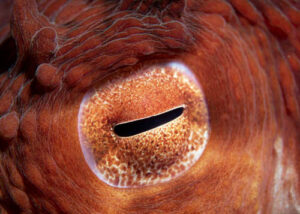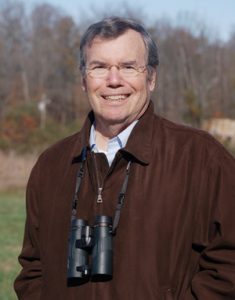Rachel Carson and Sylvia Earle: The Best Ocean Books?

 Can a single book capture the mystery, majesty, and myriad creatures, familiar and strange, of the vast, unexplored bulk of planet Earth that we call the ocean? Sylvia Earle, the leading marine scientist and ocean explorer of our time, has accomplished that with Ocean: A Global Odyssey, a stunning and sumptuous volume from National Geographic that is at once atlas, encyclopedia, photographic marvel, swiftly-flowing narrative of marine science and oceanography, and an homage to the women and men who devoted and even risked their lives to bring alive for us armchair explorers or blanket and beach chair observers the glories of the sea.
Can a single book capture the mystery, majesty, and myriad creatures, familiar and strange, of the vast, unexplored bulk of planet Earth that we call the ocean? Sylvia Earle, the leading marine scientist and ocean explorer of our time, has accomplished that with Ocean: A Global Odyssey, a stunning and sumptuous volume from National Geographic that is at once atlas, encyclopedia, photographic marvel, swiftly-flowing narrative of marine science and oceanography, and an homage to the women and men who devoted and even risked their lives to bring alive for us armchair explorers or blanket and beach chair observers the glories of the sea.
Rachel Carson managed this feat with her award-winning and best-selling trilogy of ocean books, especially her first and finest, Under the Sea-Wind. But Carson was not able, like Earle, to explore, research, dive into and document the global ocean in scuba and submersibles. Nor did she have access to the technology – satellite photos, deep sea soundings and surveillance, or color photographs of living microscopic organisms. But Carson and Earle share similar intentions and success. Both believe that we humans are less likely to harm or destroy those creatures whom we learn to know and love.
 Carson enabled readers to become enamored of mackerel, eels, shorebirds, octopuses, sharks, even minute predators called ctenophores. She explained that, “Under the Sea-Wind was written to make the sea and its life as vivid a reality for those who may read the book as it has become for me during the past decade…. shore birds and fishes and beach crabs and all the other creatures that live in the sea or along its edge.” It was when Carson first began to “let my imagination go down through the water and piece together bits of scientific fact until I could see the whole life of those creatures as they lived them in that strange sea world.” But Carson had to rely on the more limited research of the ocean and sea creatures which she began writing about in the 1930s. No submersibles or swimming next to sharks for her. But her imagination and her ability to breathe life into dry, colorless scientific documents and drawings revealed and anticipated the wonders of Ocean: A Global Odyssey.
Carson enabled readers to become enamored of mackerel, eels, shorebirds, octopuses, sharks, even minute predators called ctenophores. She explained that, “Under the Sea-Wind was written to make the sea and its life as vivid a reality for those who may read the book as it has become for me during the past decade…. shore birds and fishes and beach crabs and all the other creatures that live in the sea or along its edge.” It was when Carson first began to “let my imagination go down through the water and piece together bits of scientific fact until I could see the whole life of those creatures as they lived them in that strange sea world.” But Carson had to rely on the more limited research of the ocean and sea creatures which she began writing about in the 1930s. No submersibles or swimming next to sharks for her. But her imagination and her ability to breathe life into dry, colorless scientific documents and drawings revealed and anticipated the wonders of Ocean: A Global Odyssey.
Sylvia Earle life work has been shaped directly by Rachel Carson, whose talent she rhapsodizes about in the Introduction to the 2018 edition of Carson’s 1951 best-seller, The Sea Around Us. “Most remarkable to me is what she did imagine. Her writings are so sensitive to the feelings of fish, birds and other animals that she could put herself in their place, buoyed by the air or by water, gliding over and under the ocean’s surface. She conveyed the sense that she was the living ocean…”

 Like Carson, Earle has designed her book to delight the reader and develop empathy for the interconnected ecosystems and species that are on display here. We float with napping sperm whales, peer into the eye of an octopus, and look at and learn about phytoplankton that are essential to food chains that feed krill, upon which feeding whales depend. We peer from satellites into the depths of the abyss. We can know about and choose our future. Ocean: A Global Odyssey gently glides from the ancient, awesome creation of the seas and continents to the growing perils of climate change, plastics and toxic pollution, and industrialized fishing and consumption that human ingenuity and a lack of wonder, imagination and empathy has brought us. Yet Earle remains cautiously optimistic that the intrepid bands of scientists, writers, photographers, explorers and advocates who are also documented here can arouse the public and policy makers to see the ocean as the next great frontier to be explored and protected, not emptied and exploited.
Like Carson, Earle has designed her book to delight the reader and develop empathy for the interconnected ecosystems and species that are on display here. We float with napping sperm whales, peer into the eye of an octopus, and look at and learn about phytoplankton that are essential to food chains that feed krill, upon which feeding whales depend. We peer from satellites into the depths of the abyss. We can know about and choose our future. Ocean: A Global Odyssey gently glides from the ancient, awesome creation of the seas and continents to the growing perils of climate change, plastics and toxic pollution, and industrialized fishing and consumption that human ingenuity and a lack of wonder, imagination and empathy has brought us. Yet Earle remains cautiously optimistic that the intrepid bands of scientists, writers, photographers, explorers and advocates who are also documented here can arouse the public and policy makers to see the ocean as the next great frontier to be explored and protected, not emptied and exploited.

 Sandra Steingraber is also heir to Rachel Carson’s legacy. A poet, writer, Ph.D. biologist, cancer survivor, and relentless advocate, Steingraber descends from the environmental health lineage of Carson with books like Living Downstream: An Ecologist’s Personal Investigation of Cancer and the Environment. She has written often about Carson and has edited and introduced a 2018 Library of America edition of Silent Spring and related articles. She has followed this with the 2021 Library of America edition of Rachel Carson’s ocean books and additional materials in Rachel Carson: The Sea Trilogy.
Sandra Steingraber is also heir to Rachel Carson’s legacy. A poet, writer, Ph.D. biologist, cancer survivor, and relentless advocate, Steingraber descends from the environmental health lineage of Carson with books like Living Downstream: An Ecologist’s Personal Investigation of Cancer and the Environment. She has written often about Carson and has edited and introduced a 2018 Library of America edition of Silent Spring and related articles. She has followed this with the 2021 Library of America edition of Rachel Carson’s ocean books and additional materials in Rachel Carson: The Sea Trilogy.
Like Sylvia Earle, Steingraber recognizes that the power of Carson’s writing about the sea goes beyond the poetic prose and descriptions of the deep otherwise unavailable. “There is a larger purpose that amounts to “an ocean-centric planetary ethic and philosophy of life.” Steingraber sums up the essential ethic: “…if we could look down at the surf through the eyes of a storm-tossed shorebird, or up at the moon from the stony bottom of a tide pool, we might, the author believed, experience wonder and humility, and wonder and humility, said Carson, do not exist side by side with a lust for destruction.”
Readers of Rachel Carson: The Sea Trilogy will be able to feel the sea and its species, to focus on Carson’s gifts as a writer who brings the ocean alive, makes us care, and want to act. The text is relatively unadorned. Under the Sea-Wind has none of the illustrations that accompanied earlier editions, so Carson’s powerful and pictorial prose alone must transport us landlubbers beneath the waves. And it does. Before there was the aqualung, Jacques Cousteau, or Sylvia Earle, there was Rachel Carson who led Americans to love the once remote and empty ocean, to recognize it is the place from which all life began and all life returns.
Read together, these ocean books of Sylvia Earle and Rachel Carson, though some seventy years apart, are the single best introductions to the ocean and its wonders. They should ignite yet another generation to use its talents to limn and love the living Earth – its land and sea – so that we humans will no longer wish to harm it, but instead preserve and protect it.
 — Bob Musil is the President & CEO of the Rachel Carson Council and author of Rachel Carson and Her Sisters: Extraordinary Women Who Have Shaped America’s Environment (Rutgers, 2016). He is also the co-lead of the RCC’s Coasts and Ocean Program and the editor of the forthcoming annotated edition from Rutgers University Press of Rachel Carson’s Under the Sea-Wind with his Introduction, updated marine science, and historic and contemporary illustrations and photographs.
— Bob Musil is the President & CEO of the Rachel Carson Council and author of Rachel Carson and Her Sisters: Extraordinary Women Who Have Shaped America’s Environment (Rutgers, 2016). He is also the co-lead of the RCC’s Coasts and Ocean Program and the editor of the forthcoming annotated edition from Rutgers University Press of Rachel Carson’s Under the Sea-Wind with his Introduction, updated marine science, and historic and contemporary illustrations and photographs.






